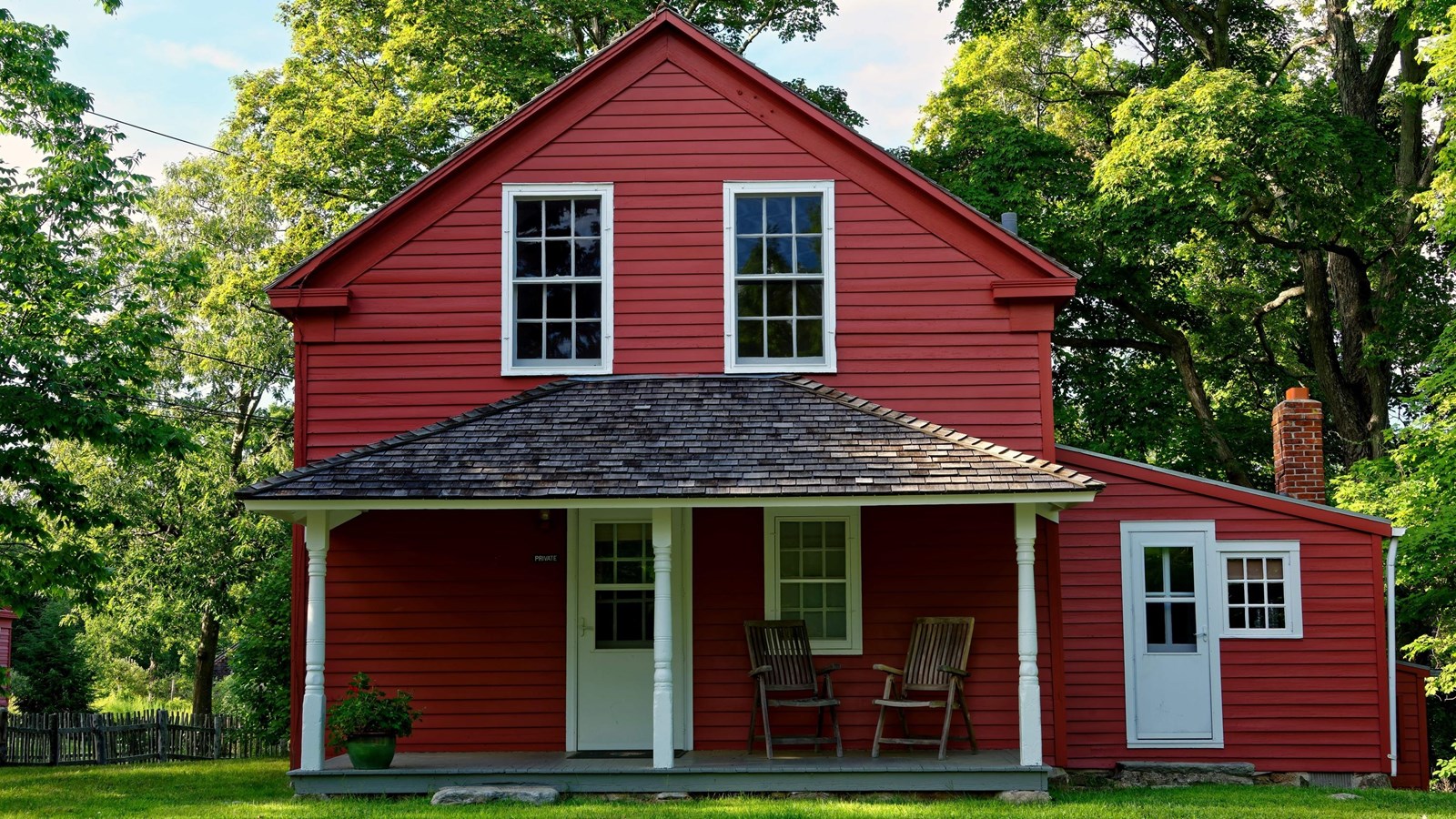Last updated: November 14, 2024
Place
The Caretaker's House and Artist-in-Residence Studio

Xiomaro.com
Weir Farm was once a fully operating farm, but Julian Alden Weir knew little about farming. To help run the farm, Weir hired a farm manager, or caretaker. The farm manager lived in the Caretaker’s House often with their families. Today, the Caretaker’s House is used for housing the park’s Artist-in-Residence, and the adjacent studio serves as their creative workspace. The house and adjacent studio are closed to the public.
History:
William Holsten and his family were the first in a succession of tenant farmers or caretakers to occupy the Caretaker’s House during Julian Alden Weir's life. The Holsten family lived in the Caretaker's House for two years, until he was let go for allowing 500 heads of celery to freeze. Around 1891, Weir hired Paul Remy. Paul Remy was one of Weir Farm’s longest term caretakers, living and working at the farm for almost 15 years. Remy occupied the Caretaker’s House with his wife and young sons, Carl and Willie.
After the death of Julian Alden Weir and his wife, Ella Baker Weir, Dorothy Weir Young inherited the farm, including the Caretaker's House. Around 1929, Dorothy hired George R. Bass as tenant farmer and caretaker. Bass resided in the Caretaker’s House for about 15 years with his wife Bessie, nine children, and his mother in - law. During this period, the Caretaker’s Complex was largely the domain of Bass’s family; however, Dorothy and Mahonri Young kept their car in the former Carriage House. For the most part, the Youngs did their own driving. When they wanted their car, they would call for it, and Mr. Bass or one of his sons would drive it to their gate at the intersection of Nod Hill Road and Pelham Lane.
The Youngs also shared the small greenhouse attached to the Caretaker's House with the Bass family, using it to start plants for the vegetable garden adjacent to the main farmhouse. The Bass family kept their own vegetable garden on the south side of the carriage house. About 30 - 40 feet from the building were asparagus beds. Beyond the asparagus were cabbages, tomatoes, and other fruits and vegetables.
Dorothy’s account book records state that the Bass Family left on September 2, 1944. The following October, Spiros Anarjeros moved into the caretaker’s house. Anarjeros was an assistant to Mahonri Young during his execution of the "This Is the Place" monument.
Today, the Caretaker’s House and the nearby art studio iareused for the park’s Artist-in-Residence program. The house and adjacent studio are closed to the public.
Keep exploring in this virtual tour of the Caretaker's House!
